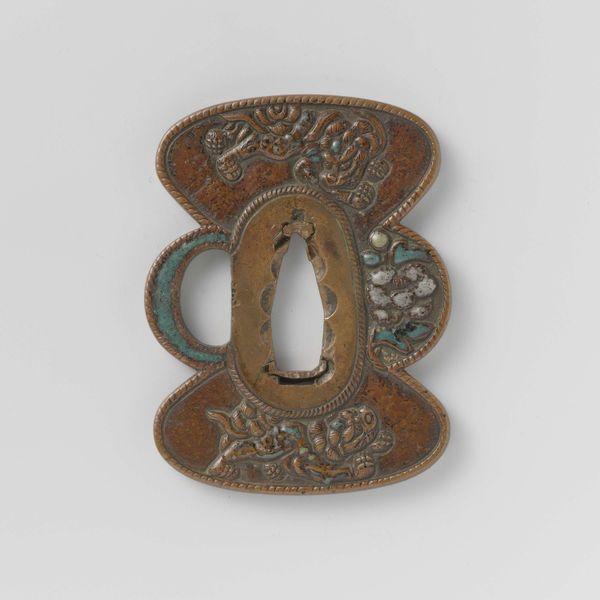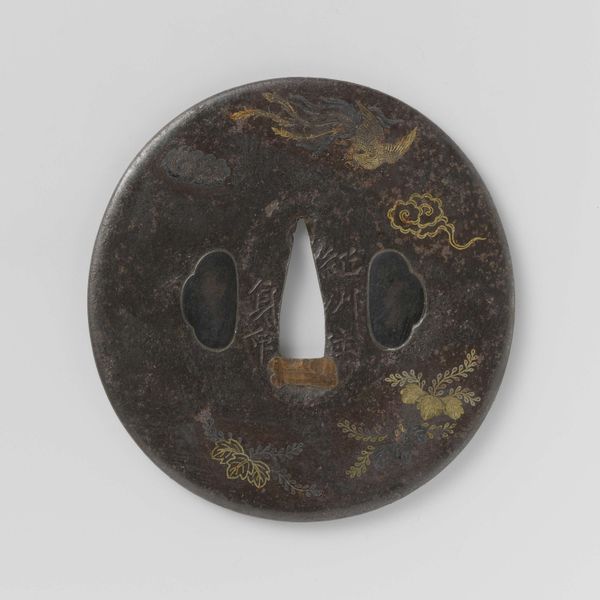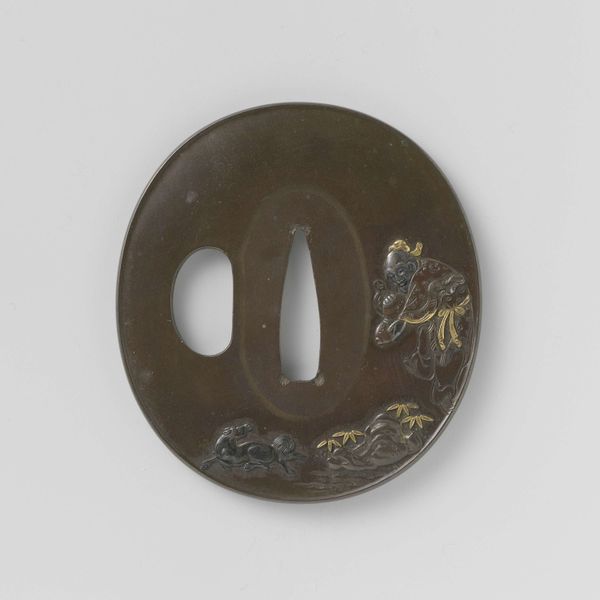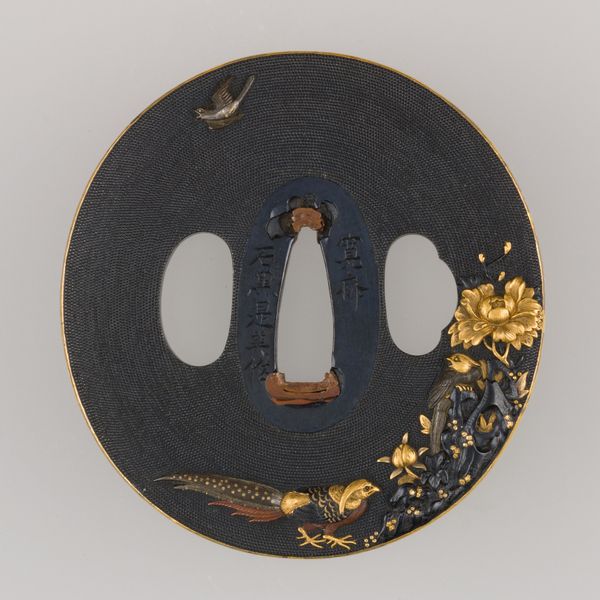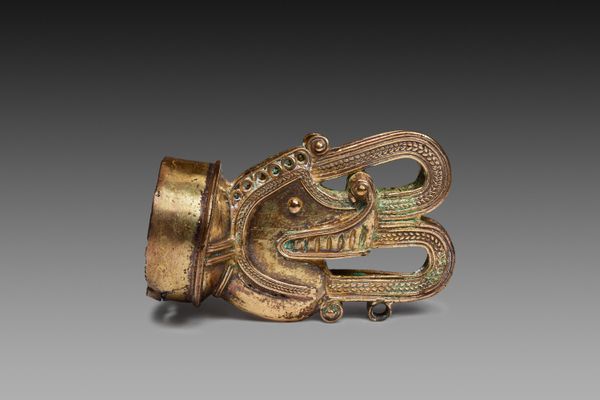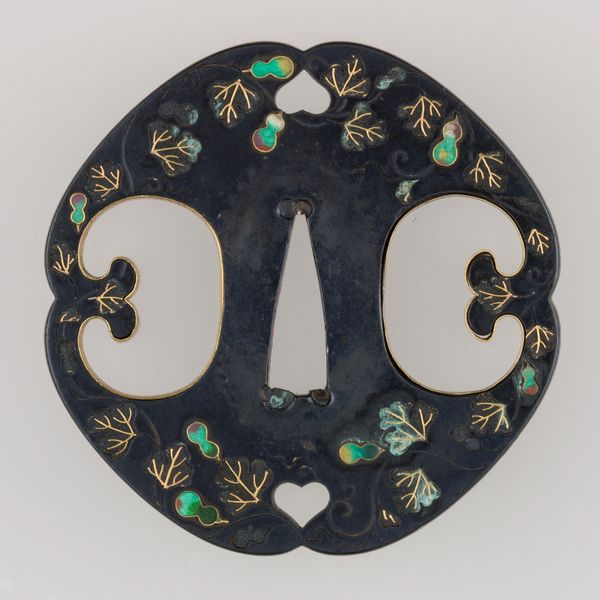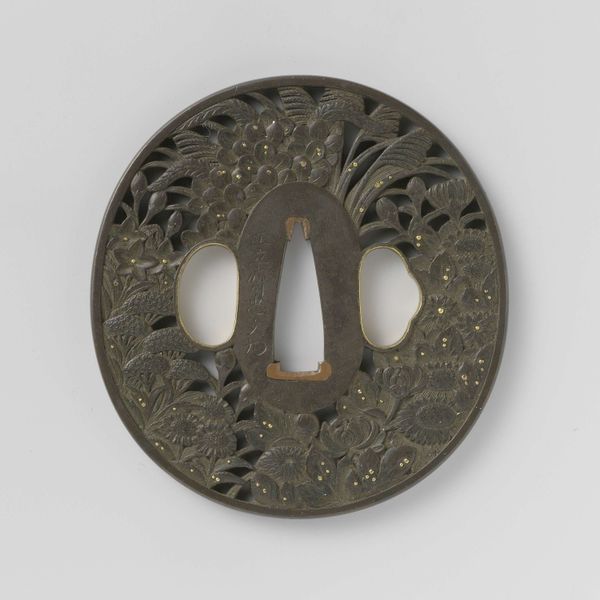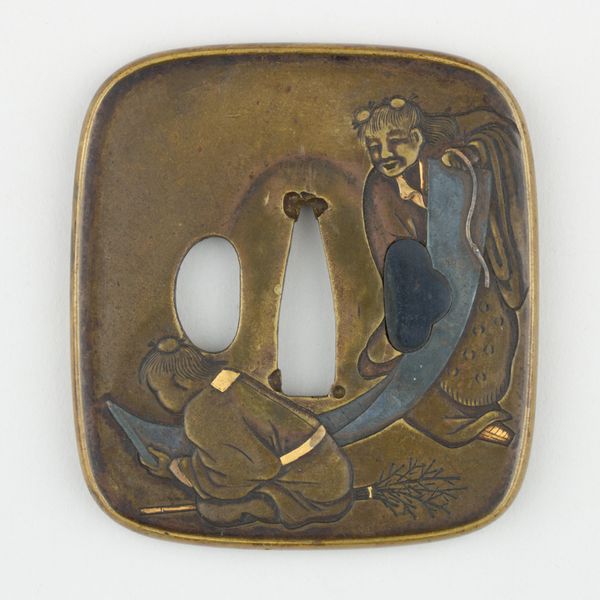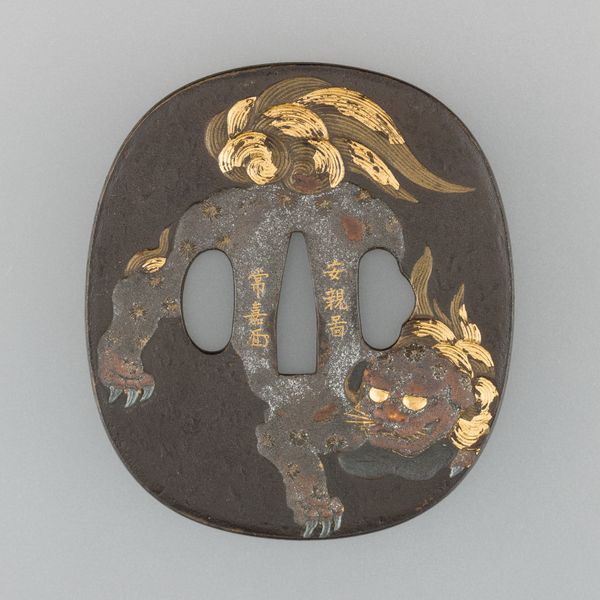
carving, metal, bronze, sculpture
#
carving
#
metal
#
asian-art
#
bronze
#
geometric
#
sculpture
#
armor
#
sword
Dimensions: H. 2 13/16 in. (7.1 cm); W. 2 11/16 in. (6.8 cm); thickness 3/16 in. (0.5 cm); Wt. 5.8 oz. (164.4 g)
Copyright: Public Domain
Curator: Just holding this object, I feel the echoes of ancient stories, fierce battles, quiet meditations… you know? This Sword Guard, or Tsuba, made sometime between 1750 and 1800 by Kawamura Tsuneshige… what leaps out at you? Editor: The tension between the ornate detail and the sheer functionality. It's almost as if violence is being refined, ritualized…glorified? Curator: Exactly! This isn't just any piece of metal; it's bronze, carved with a swirling dragon rising from waves and disappearing into clouds. Classic imagery, right? It's saying something about power, transcendence. The dragon, the water… it speaks of forces beyond our control. A rather aggressive, dominant energy that reflects the nature of men defending and asserting power at this period of time. Editor: The dragon, though beautifully rendered, feels a little… convenient? This era saw rising merchant class asserting itself and trying to emulate samurai culture and status. Is the dragon more about aspirational symbolism here, a display of cultural capital through violent imagery rather than a reflection of actual conflict? Curator: Could be! But consider also the void at its center, where the sword would be held. It is more a convergence, a connection to tradition and… frankly… style, a samurai flaunting social expectations of honor, loyalty, courage and discipline. Don't underestimate the aesthetic impact it had at that time! Imagine the glint of metal on metal, this exquisite craft protecting and extending the arm in action. Editor: And there we get back to it, don't we? What about the gendered nature of this protection? Armor isn’t exactly designed for everyone; traditionally this is exclusive and about perpetuating violence. Curator: Touché! Perhaps it speaks to the stories we tell ourselves about power and beauty and who gets to wield both. It’s an item deeply embedded in the history of control. Editor: A reminder that even the most aesthetically pleasing object can be politically loaded. Seeing the dragon as both an artistic flourish and a status symbol adds another layer of critique, questioning those traditions to challenge and, potentially, to change it. Curator: And maybe that tension – between craft and context, beauty and the brute force, personal vision and societal expectation - that’s the sword's edge after all! What you have said just then will completely change how I view and understand it. Thanks for that insight!
Comments
No comments
Be the first to comment and join the conversation on the ultimate creative platform.



